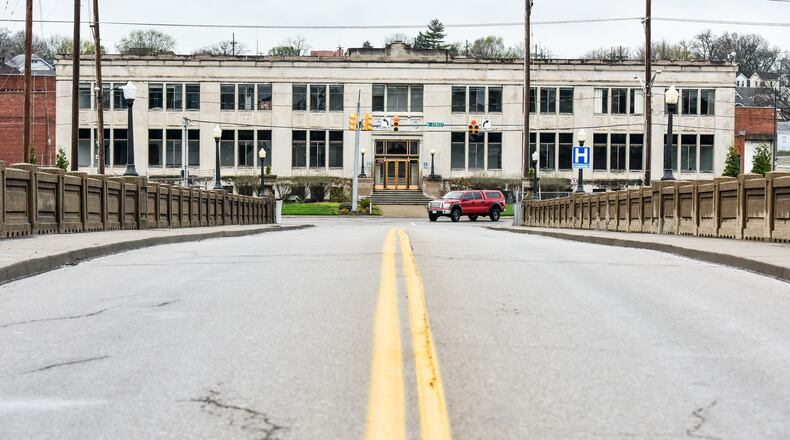Jim Logan, Hamilton’s executive director of infrastructure, strongly supports spending the $750,000 on the study, noting that the money was left over from the recently completed South Hamilton Crossing project. South Hamilton Crossing is an overpass for Grand Boulevard above the CSX railroad tracks, making it only the second east-west roadway in Hamilton on which drivers don’t have to worry about being stopped by trains.
With the scheduled 2021 opening of the gigantic indoor sports facility and convention center on North B Street called Spooky Nook at Champion Mill, Hamilton traffic will increase.
City Manager Joshua Smith disagreed with spending $750,000 on the study, which would come from $1.3 million left over from South Hamilton Crossing. That money must be spent on a permanent public improvement.
“North Hamilton Crossing is going to be a long ways out,” Smith told council, “I think there’s some more immediate needs we can use those monies for.”
The $32 million South Hamilton Crossing opened in December, after more than a century of discussions. It provides a significantly improved east-west connection in southern Hamilton between Ohio 4 and the area of Miami University’s Hamilton campus.
The city’s $750,000 would be boosted by $250,000 from the Butler County Transportation Improvement District. David Spinney, executive director of that district, said his agency usually finds money from others when it provides funding for projects.
“But in this case, my board committed $250,000 to show, ‘Yeah, there’s really regional interest in beginning to move this project forward.’” Spinney said. “Ultimately, it has a regional purpose,” in helping people from places like Oxford move east-west across the county.
Smith said it’s possible Hamilton, the state and federal government after the study may not have money to make the highway happen, “and it literally can be something that sits on the shelf for 20 years, just because there’s not funding there.”
Most of the five council members present seemed to lean toward spending the money on the study. Council members Michael Ryan and Matt Von Stein were absent.
“For lack of a better expression, the talk of the barber shop, where I was today, was North Hamilton Crossing,” Mayor Pat Moeller said. “I’m not kidding you. And that’s not the only place where I’ve heard talk about North Hamilton Crossing, traffic and Spooky Nook. You’ve got to start somewhere, and this is the start.”
Council Member Tim Naab noted people have been discussing the North Hamilton Crossing for decades. He said he favored doing the study.
“You have to have a study,” said Council Member Robert Brown. “If you don’t have a plan, you might as well throw it out the window.”
Council Member Kathleen Klink asked Smith how he would propose to spend the $750,000 in other ways. Smith told her, “If this was something that could happen in the next 20 years, I think I would be more in favor of spending money today. I don’t think it’s going to happen.”
Smith would rather spend it on street improvements the city has committed to do near Spooky Nook, so the city could borrow less.
“If you don’t do it (the study), you don’t start the project. Period,” Spinney told the Journal-News. “If you ever want to do even the first phase, first two phases, you’ve got to go through this kind of analysis.”
“So if you don’t get started, and somebody 10 years from now says, ‘You know, we really should be thinking about this,’ then you’ll start from scratch.”
City Engineer Rich Engle told council the proposed study actually is much more than that. It will include a “project-initiation package,” the draft purpose and needs statement, the project concept and feasibility study, among other things. It also would propose routes.
The Black Street Bridge near Spooky Nook was built around 1920, and engineers believe it will last only another 20 years, Engle said.
The study will provide information that will let the city apply for state and federal grants.
Spinney said because of the costs, the project likely would happen in phases:
- First, a bridge across the Great Miami River near the Black Street Bridge and connecting to Martin Luther King Boulevard (U.S. 127). That alone could cost $75-$100-million, Engle said
- Second, an overpass above railroad tracks that might cost $25-50 million
- Third, an extension further eastward to Ohio 4
- Fourth, a continuation eastward to Ohio 129
Once the study is finished in about a year, the city would immediately start requesting design grants for the project, Engle said.
About the Author
